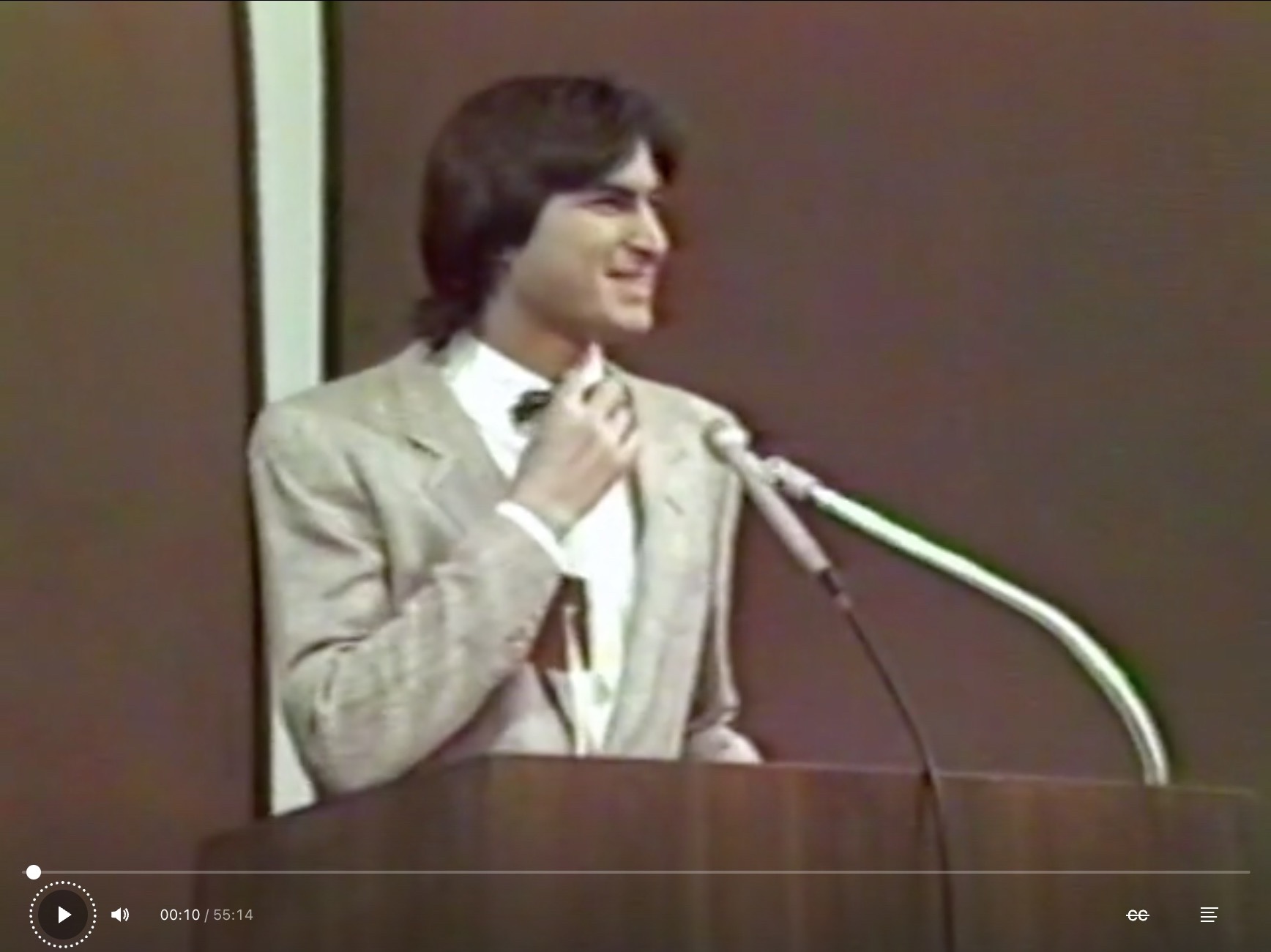Jobs
Steve Jobs’s Predictions from the 1983 International Design Conference – TidBITS

The Steve Jobs Archive has unveiled a new digital exhibit, “The Objects of Our Life,” that features exclusive footage of the 28-year-old Jobs at the 1983 International Design Conference. It’s a fabulous time capsule of the pre-digital era, with Jobs saying “Uh-oh” when no one in the audience admits to owning an Apple or any other personal computer. This is a young Steve Jobs, speaking more extemporaneously and unguardedly than he would in later years. I encourage you to spend some time on the exhibit and, in particular, try to watch the full 55-minute presentation.
I was mostly struck by how prescient Jobs was in that talk. Although he had to explain computers and computer programs by analogy for an utterly non-technical audience, he still tossed out prediction after prediction about how things would be in the future. Given that this is 1983, we’ve lived through much of that future by now, and with the benefit of hindsight, we can see that he was remarkably accurate, if sometimes optimistic regarding timeframes.
- College student usage: Jobs said, “There is going to be no college student three or four years from now that’s ever going to think of writing a paper without one of these things, just like they will not think of going to a science class without a calculator today.” That may have been slightly early overall, but everyone I knew Cornell from 1985 through 1989 used WriteNow for all their papers.
- Computers versus cars: Jobs suggested that by 1986 or 1987, people would spend more time interacting with computers than cars. He was off by a few years, but by the early 1990s, that became true, particularly once people started using the Internet. Nowadays, it’s commonplace for people to spend many of their waking hours using a computer or smartphone.
- Networked communications: Jobs acknowledged that the industry was about 5 years from networking computers in the office and 10 to 15 years from hooking computers together in the home. But he was adamant that it would happen because, as he said, “ultimately, a computer is going to be a tool for communication.” Since AppleTalk appeared for the Macintosh just a few years later and modems became commonplace by the mid-1990s, I think he was spot on.
- Voice recognition: In response to an audience member asking how long people would be tied to keyboards, Jobs said it would take the better part of a decade before the industry would get even close to having fluid voice recognition. Much as we complain about Siri, voice recognition has improved vastly, but over 30 years later, we’re still years away from having graceful interactions. Perhaps Apple Intelligence will change that.
- Widespread productivity apps and email: Jobs said that in 15 years, society would have broad access to tools like graphics apps and multimedia word processors, and we would be able to share documents via email. If anything, he underestimated that one—by 1998, software had become quite sophisticated, and the Internet had become a fixture in many people’s lives.
- Mobile computing and communications: Jobs said, “Apple’s strategy is really simple. What we want to do is we want to put an incredibly great computer in a book that you can carry around with you, that you can learn how to use in 20 minutes. That’s what we want to do. And we want to do it this decade. And we really want to do it with a radio link in it. So you don’t have to hook up to anything. You’re in communication with all these larger databases and other computers.” That was wishful thinking, and all we got that decade was the bulky Macintosh Portable in 1989. But with that vision in mind, you can trace a line from the PowerBooks starting in 1991, the Newtons from 1993 through 1997, and the iPods in 2001, until we finally arrive at the iPhone in 2007 and the iPad in 2010.
- Chatbots of people: Jobs predicted that in 50 to 100 years, everything we create would be digital, so after we’re dead, it would be possible to ask what we would have said about something new. He was careful to qualify that we might not get the right answer, but maybe we would. We have all the pieces for this right now, what with so much of our lives mediated through digital devices and generative AI being able to use massive data stores to respond fluidly to nearly any query. And yes, ChatGPT gave an entirely plausible and nuanced response when I asked it what Steve Jobs would have thought about generative AI.
Those are just the predictions that have some sort of timeline associated with them. Other aspects of the talk foreshadow an increased role for industrial design, the rise of email and distribution lists, the use of computers in creative endeavors, the shift from programming computers to using them, opportunities for young programmers to create startups, and the need for online software distribution.
At some point, Jobs says, “We’re all pretty young and impatient,” and you can see that in all his predictions. He wants the future, and he wants it now, even when he knows that it’s technically impossible with the technology of the time. But with such vision, energy, and impatience to create the future, you can see why Apple became the company it did. But it’s also important to realize that Apple couldn’t remain that company forever. Both Jobs and Apple would inevitably grow up, for better and worse, but we eventually got most of what he wanted in 1983.








